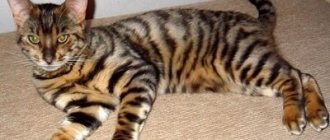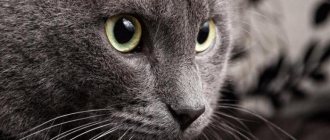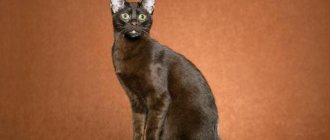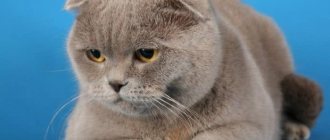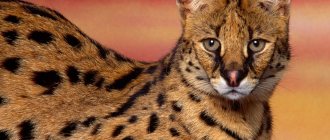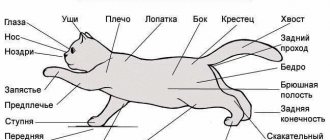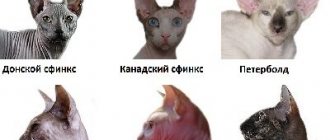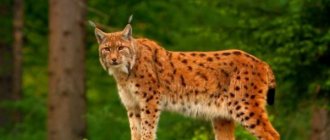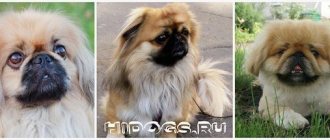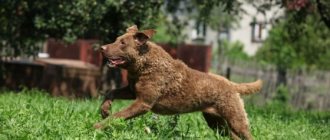Chinese Li Hua Mao or Dragon Li, as they are also called, are very rare even in their homeland. In most countries, only connoisseurs have heard about them, and there is no need to talk about nurseries or the sale of kittens. Perhaps in the near future the situation will change in favor of furry dragons, because interest in everything Chinese is constantly growing.
Description of the breed
Dragon Li is a Chinese cat breed, very popular in its homeland, as well as in the United States. These cats were first presented in 2003 at one of the Beijing exhibitions, but the breed received official recognition only in 2010. Despite these figures, cats of the Li Hua breed are not at all new. They have been living in China for quite some time. It is believed that these are descendants of ancient cats that inhabited the mountains many centuries ago.
Dragon Lee is one of the ten most popular tabby cats in the United States, occupying an honorable third place. But in Russia this breed did not take root. Li Mao is too similar to our simple yard tabby cats.
How much does it cost and how to choose a kitten
It is quite difficult to buy a representative of this species, because... nurseries are located mainly in China. You not only need to purchase a kitten, but also pay for its transportation. Their cost is high - from $500 and above. If they offer to buy a cat at a low price, then it cannot be a representative of this rare breed.
When choosing, be sure to pay attention to the presence of:
- breed standards;
- pedigree;
- list of vaccinations given;
- healthy appearance;
- natural activity.
The kitten should not have any physical disabilities and be 3-4 months old or older.
1111
History and breed standard
First of all, it is worth saying that the name “Dragon Li” is used only in Western countries and is used more for commercial purposes. Apparently to emphasize the ancient Chinese origin. In their homeland they are better known as Li Hua or Li Mao.
There is no exact information about the origin of these cats. It is only known that the Chinese consider Li Mao to be the descendants of Chinese mountain cats, which were subsequently domesticated.
Li Hua was first presented to the public in 2003. The preliminary standard for the breed was written in 2005, but the Li dragon received recognition only in 2010. At the same time, the first representatives of the breed were exported from China. Their popularity is quite high in China, as well as in the USA. In Europe, these cats are extremely rare, and in the CIS countries they are not known at all. Today, the Li dragon is considered one of the rarest cat breeds in the world.
Mr. Cat Recommends: Li Hua's Advantages and Disadvantages
Each breed has its pros and cons. This also applies to the Chinese cat. Here are some of its advantages:
- distinguished by devotion to its owner;
- has an exotic origin;
- has a light character, which allows him to live in harmony with other animals;
- there is no aggressiveness;
- does not require special attention;
- gets sick very rarely;
- characterized by intelligence and intelligence.
Negative parameters include the following:
- Difficulty in purchasing and selecting a partner for mating: a purebred breed can be found in China or the USA.
- High cost: a kitten is quite difficult to find.
- Normal development: requires a spacious room to allow for activity and movement.
- Attitude towards children: tolerant, but not for long, so it is better to avoid such contacts.
- Difference: Can be confused with other breeds.
External signs
At first glance, Dragon Li is no different from a mongrel domestic cat and an ignorant person cannot distinguish them. But of course, differences exist. Li Mao is a large, muscular cat with strong, strong legs and an even posture. Unlike most breeds, Li Hua's hind legs are the same length as her front legs. The tail is proportional to the length of the body and is quite thick.
The shape of the head is slightly elongated and has a graceful round forehead. The cat's face is round with an even profile and a massive chin. The eyes are the highlight of this breed. They have an almond shape and a slightly slanted fit. Eye color can be yellow or green.
Li Hua's coat is two-layered, thick and densely packed, but has practically no undercoat. Males' coats are usually rougher to the touch than cats'. The only color recognized as a standard is brown tabby. Black stripes should be on the head and throughout the body, the tail is covered with black rings, the tip is completely colored. Each individual hair of fur is colored in three shades: black, brown and light brown.
Li Hua
The Chinese Li Hua Mau (international name of the breed: Dragon Li) is an ancient breed of short-haired endemic feline native to the northeastern foothills of Tibet and the adjacent Mongolian steppes. Manuscripts of the imperial Tang dynasty claim that a wild Gobi cat visited a Chinese village, chose a house on the outskirts and notified the peasant family living there about further peaceful good neighborliness. The peoples of the empire liked their calm, friendly disposition and talent for destroying small rodents: miniature tigers quickly spread throughout the country.
No designer genetic mutations, no interbreed matings that improve the phenotype: all the splendor of the Chinese Li Hua breed is in its pristine and natural nature.
Good nature and human focus, honed over a millennium of domestication, supported by the strength and graceful grace of predatory hunters, make Dragon Lee a significant figure in the cat world.
Chinese cats amaze with their ideal proportions, excellent health and predatory power. The imperious squint of his emerald-green or golden-yellow long-eyed eyes reminds those around him that this is not an ordinary sofa cat, but a beast, albeit tamed.
The indisputable advantage of Chinese dragons is their dense, short, two-layer coat of “tiger” color (“brown tabi”). Li Hua of good blood is spectacularly delightful: dark stripes shaded in a soft tone accentuate the predatory silhouette, clear make-up of the face (eye rim, contour lines of the cheeks and forehead) softens and “grounds” the wild image a little. The breed standard specifies the smallest details of color: a necklace of beads on the chest, a scattering of “buttons” on the abdomen, bracelets on the paws, a tassel on the tail and an anthracite frame around the corners of the mouth (creating the sly smile of a striped domestic dragon). The fur coat of graceful cats is silkier and softer than the rough “clothes” of larger and densely built cats.
Chinese and overseas breeders (the breed is very popular in the USA) admire Li Hua Mao's affectionate nature, calm nature and amazing intelligence. Playful and dynamic striped dragons easily adapt to any living conditions, get along well with other animals, and are amenable to education and training.
Character
The Dragon Li is an affectionate and calm breed. Although these cats cannot be called independent, they are still less affectionate towards people than most breeds. Nevertheless, they easily make contact, are sociable and playful. Li Mao get along well with other animals in the house and do not show aggression. But cats of this breed do not get along well with children. They do not show aggression towards them, but they are not in a hurry to make friends, preferring to stay at a distance from them.
This breed is well suited for keeping in an apartment. Li Hua are moderately active, but quite calm. They do not refuse to play, but when they are at home on their own, they prefer to sleep peacefully in a secluded place.
Features of temperament
When purchasing a cat, you should always know its characteristics. Li Hua will wait for the owner to take the first step when making an acquaintance, and only after showing friendliness on his part will he make contact. It is characterized by autonomy and independence.
He is distinguished by his devotion, but does not sit in his arms for a long time and does not get bored alone. Long-term lack of attention from the owner is hard to bear. Doesn't like small spaces; she needs room to move. She is very curious, but not trusting, so she will look at guests from afar.
An excellent hunter - gets rid of small animals, rodents and birds. If he feels forced, he will defend himself and use his teeth and claws - it is better to keep children away from him. Thanks to his innate intelligence, he can be taught to carry out simple commands. Does not tolerate change of environment well.
Education and training
The Chinese claim that a smarter and more pliable breed cannot be found. Li Hua are smart and grasp everything literally on the fly. A cat can easily be taught various commands. The main thing here is to find the right approach. These cats are very loyal to their owners and try to please them in everything. Perhaps this is precisely the secret of such pliability to training.
There is no need to raise a cat of this breed at all. The mother cat herself accustoms her children to the tray and to the designated place for eating.
Health and life expectancy
The Li Hua Mao breed was formed naturally. Many years of natural selection have created tenacious, energetic, healthy individuals with strong immunity. Easy, affordable food and the delights of designer selection have not formed a list of genetic and hereditary pathologies.
Recommendations from veterinary clinic specialists are minimal:
- mandatory vaccinations from a very early age;
- regular cleansing of the body from helminths;
- dermatitis is a common problem for striped cats: if detected in time, the skin disease can be treated easier and faster;
- any wound, abrasion, injury is a reason for an immediate visit to a veterinarian.
Cats cannot tell their owner that they are feeling unwell or deteriorating. Communicate regularly with your cat and carefully observe its purring. Any change in behavior is a warning sign:
- refusal of food;
- dullness of look, lethargy, low activity;
- abnormal stool, blood in the urine;
- •purulent discharge in the corners of the eyes;
- dull fur.
Following simple recommendations and maintaining decent maintenance will guarantee a long (up to 14 years) happy life for Li Hua Mao.
Maintenance, care, health
Li Mao reaches puberty later than other cats. An adult is considered an individual who has reached the age of three. This also determines that the kitten is not separated from its mother earlier than twelve weeks.
Dragon Li does not require extensive care. He has short hair that has virtually no undercoat. You need to comb your fur coat no more than once a week. For these purposes, a rubber massage mitten is quite suitable, which will not only remove dead hairs and improve blood circulation, but will also bring unearthly pleasure to the cat.
Bathing is recommended as needed, but not more than once a month. For bathing products, you can use both cat and regular baby shampoos.
Li Mao's cats are of aboriginal origin. They have not been crossed with other breeds, which means they do not have genetic diseases associated with this. They have good health and, with proper care, can easily live up to 18–20 years.
What to feed
The diet depends on the age, sex and health of the individual. Li Hua have an excellent appetite, but they are not overweight.
They are usually fed warm food in the morning and evening. You can use ready-made premium, super premium or holistic food or natural products. Mixed food is allowed, but it is imperative to serve them at separate times: artificial and natural food.
Meat, vegetables and cereals are boiled before serving. Fruits, fatty and sweet foods are not included in the diet. Dairy products - only low-fat and not very often. Fish and chicken bones are not given. Constant access to drinking water must be provided.
Hygiene and care
Such animals definitely need to buy a scratching post so that they do not damage the furniture.
To keep your pet clean, you should wash it 3 times a year. Depending on how much and often he gets dirty, the number of baths can be increased. The cat needs to be brushed twice a week, and during shedding, the fluffy Chinese Mao needs this procedure more often. Eyes and ears should also be cleaned weekly with cotton pads or a sterile wipe. It is important to provide your pet with a scratching post, otherwise he will use the furniture for the same purposes.
Fold
Discussions about the ancient purebred cats of China are impossible without mentioning the legendary fold-eared breed. The Chinese Fold is the subject of controversy, scandals and numerous scientific disputes in the world of cat lovers. Chinese felinologists insist on the ancient history of selection and breeding of the lop-eared species, confirming the information with numerous references in historical documents and images on the crafts of blacksmiths, engravers, painters and potters of the Celestial Empire. Chinese historians claim: fold-eared cats lived in the palaces of the Chinese nobility and were used to hunt small game, but at a certain point they went out of fashion and were lost as a species.
Area
Most often, this breed is found in the north-west of China, in the mountains and steppes, as well as in Mongolia. The majority of representatives live in areas of high altitudes. As a rule, these are meadows, clearings with bushes, and forests. It is impossible to meet the Chinese breed in actual deserts.
We suggest you read: How to determine how much food your cat needs per month
The kittens, whose photos are posted in the article, prefer warm climates. If we talk about mountains, then individuals are found at an altitude of 2-4 thousand meters above sea level. This breed is able to withstand harsh weather conditions, including temperature changes. Strong winds often blow (mostly dry), which are observed all year round. Winters in this area are too cold and summers are too hot.
Description of the appearance of the dragon cat
The Chinese cat resembles a wild European cat - large, with gray striped hair. In winter, its coat is yellowish-gray, and in summer it is dark brown. The pattern on the coat is striped.
The physique of these cats is muscular, the body is strong and slender.
Size – 84-90 centimeters in length. The tail makes up one third of the body length. A cat has 4-6 transverse dark stripes on its tail. The tip of the tail is crowned with a dark tip. The body is proportional, with short but powerful legs. Thick fur grows between the toes. The claws are retractable.
The ears are large and crowned with long tufts. Its appearance resembles a miniature lynx.
